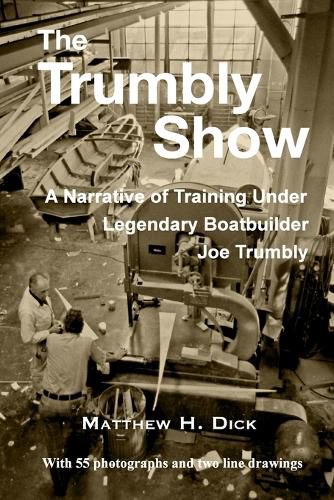Readings Newsletter
Become a Readings Member to make your shopping experience even easier.
Sign in or sign up for free!
You’re not far away from qualifying for FREE standard shipping within Australia
You’ve qualified for FREE standard shipping within Australia
The cart is loading…






This title is printed to order. This book may have been self-published. If so, we cannot guarantee the quality of the content. In the main most books will have gone through the editing process however some may not. We therefore suggest that you be aware of this before ordering this book. If in doubt check either the author or publisher’s details as we are unable to accept any returns unless they are faulty. Please contact us if you have any questions.
This book is about the building of boats, primarily in wood but also in fiberglass. It is an account of the 19 months the author spent in the Boat Building Program at L.H. Bates Vocational Technical Institute in Tacoma, Washington, from 1977-1979, and of his work in boatyards during that period. The Bates instructor was Joe Trumbly, whose training program was then regarded as the best in the United States. Trumbly's career was remarkably diverse. He worked as a welder on steel ships during WWII. He was a lead man in boatyards during the last years of production wooden boatbuilding. He designed, built, and raced powerboats. He designed and single-handedly built his own 40-foot and 51-foot wooden sailboats. He designed production and one-off sailboats on commission. He designed and modeled propellers, had them cast, and tested them. He invented new tools and techniques in boatbuilding and was arguably the best boat loftsman in the world. The book tells Trumbly's story from the point of view of the author's interactions with him and with the boatbuilding industry of which Trumbly was an integral part. Chapter 1 introduces Trumbly and Tacoma. Chapter 2 tells how the author developed an interest in boats while working in Alaska. Chapters 3 and 4 present necessary background: how boats are built, and the history and importance of lofting. Chapters 5 through 14 continue chronologically with the author's training at Bates and work in boatyards, with insights into the personalities of Tacoma boatbuilders and life in Tacoma in the late 1970s. Chapter 15 summarizes Trumbly's life. Chapter 16 is an afterword: the fates of some of the people in the book and of the Bates Boat Building Program after 1979. The book includes a glossary and illustrates the textual content with 55 photographs and two line drawings.
$9.00 standard shipping within Australia
FREE standard shipping within Australia for orders over $100.00
Express & International shipping calculated at checkout
This title is printed to order. This book may have been self-published. If so, we cannot guarantee the quality of the content. In the main most books will have gone through the editing process however some may not. We therefore suggest that you be aware of this before ordering this book. If in doubt check either the author or publisher’s details as we are unable to accept any returns unless they are faulty. Please contact us if you have any questions.
This book is about the building of boats, primarily in wood but also in fiberglass. It is an account of the 19 months the author spent in the Boat Building Program at L.H. Bates Vocational Technical Institute in Tacoma, Washington, from 1977-1979, and of his work in boatyards during that period. The Bates instructor was Joe Trumbly, whose training program was then regarded as the best in the United States. Trumbly's career was remarkably diverse. He worked as a welder on steel ships during WWII. He was a lead man in boatyards during the last years of production wooden boatbuilding. He designed, built, and raced powerboats. He designed and single-handedly built his own 40-foot and 51-foot wooden sailboats. He designed production and one-off sailboats on commission. He designed and modeled propellers, had them cast, and tested them. He invented new tools and techniques in boatbuilding and was arguably the best boat loftsman in the world. The book tells Trumbly's story from the point of view of the author's interactions with him and with the boatbuilding industry of which Trumbly was an integral part. Chapter 1 introduces Trumbly and Tacoma. Chapter 2 tells how the author developed an interest in boats while working in Alaska. Chapters 3 and 4 present necessary background: how boats are built, and the history and importance of lofting. Chapters 5 through 14 continue chronologically with the author's training at Bates and work in boatyards, with insights into the personalities of Tacoma boatbuilders and life in Tacoma in the late 1970s. Chapter 15 summarizes Trumbly's life. Chapter 16 is an afterword: the fates of some of the people in the book and of the Bates Boat Building Program after 1979. The book includes a glossary and illustrates the textual content with 55 photographs and two line drawings.